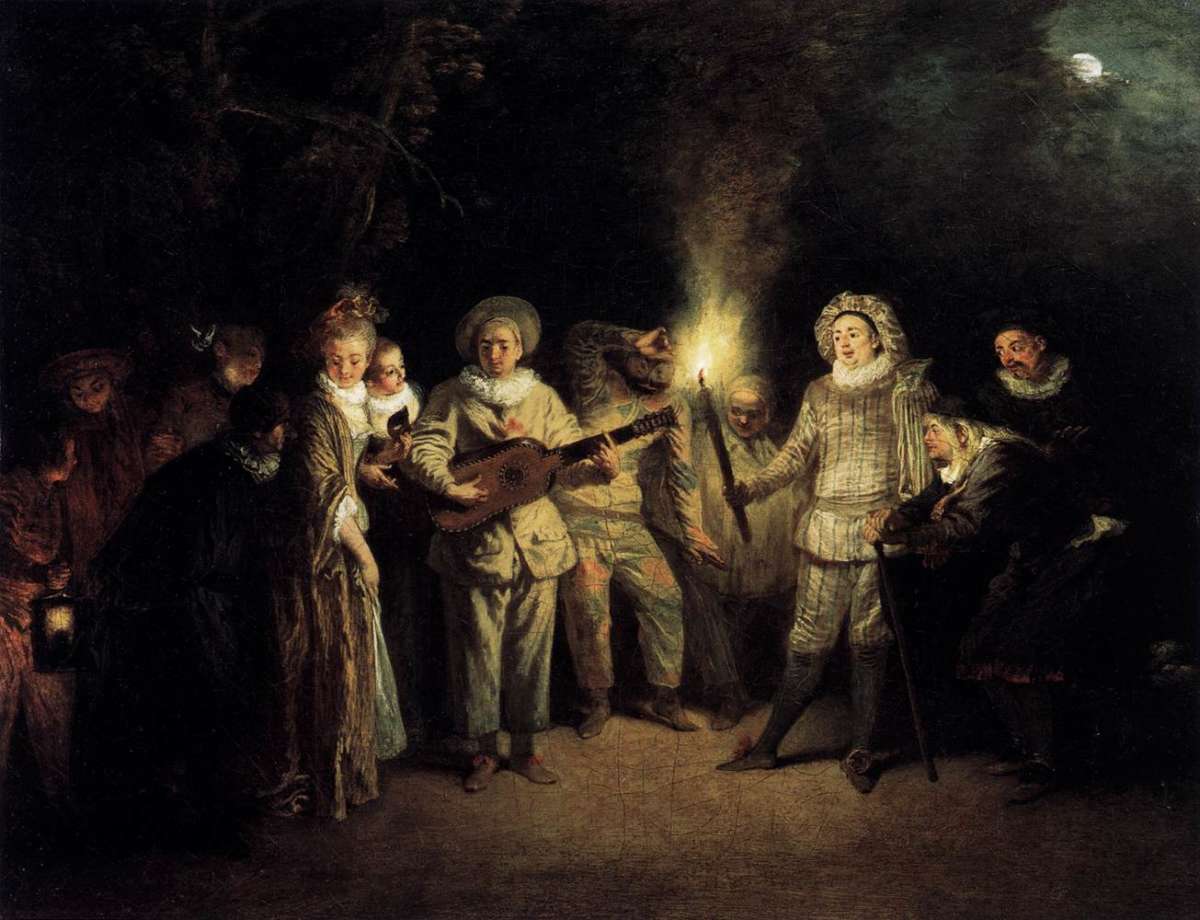One of the pioneers of Rococo: Who is Jean-Antoine Watteau?
Watteau's early works were on commercially produced military subjects, but later concentrated on rustic idylls, which were very fashionable in the early 18th century.

Jean-Antoine Watteau (1684-1721), one of the most brilliant and original artists of the 18th century, had an important influence on the development of Rococo in Europe. During his short career, he freed French painting from the Italian style it had been influenced by for two centuries, encouraging a resurgence of interest in color and movement.
Jean-Antoine Watteau (October 10, 1684 – died July 18, 1721) was a French painter and draughtsman whose brief career spurred the revival of interest in colour and movement, as seen in the tradition of Correggio and Rubens.
Part of the Burgundian-Habsburg Netherlands until it was annexed by France by the Treaty of Nijmegen, Valenciennes was a prosperous city with its own unique laws, customs, and habits. But at the end of the 17th century, art was in decline here, as elsewhere in Flanders. The Italian taste for painting, which pervaded all of Europe, nearly extinguished the light of Flemish painting at the turn of the century, suffocating the previously strong art in the region. While there were few talented local artists to train students in the city, the churches and monasteries housed excellent works by the masters of Flemish art—especially Rubens and his school.
Fatherless Houses or…
Born in Valenciennes in 1684, Jean-Antoine Watteau would always identify himself as a Flemish, being of his roots. According to his first biography, although the Watteaus were a very wealthy family that was influential in the region, the violent tendencies of his father, Jean-Philippe Watteau, caused him to be removed from the family. Antoine, who had an unhappy childhood due to the negative behavior of his father, became a voracious book reader and an enthusiastic music lover, away from social life during these years. It is not known exactly when his artistic talent was discovered, but he was under eighteen when he started working in the workshop of Jacques Albert Gérin (1640-1702), the oldest of the painters' guild in Valenciennes. Watteau, who did not follow in the footsteps of Gérin, who was firmly attached to baroque art, realized that he could not learn anything more from his master after the basic education he received, and turned his way to Paris, the second largest city in Europe.
Old masters and not coming back
By the time Watteau went to Paris in 1702, the War of the Spanish Succession was a year away. Right in this period, aka Sun King XIV. Industry, commerce, science, and culture, which had flourished during Louis' absolutist rule, were also beginning to decline. The greatest painters of that generation, including Charles Le Brun and Pierre Mignard, were dead, and the only profitable painting genre left was portraiture, which Watteau had never specialized in. He was a shy young man, with no formal education or social connections, but highly intelligent, curious, observant, and tasteful; more importantly, he had no intention of returning to Valenciennes. Instead, he found a workshop in Notre Dame and made a living by painting copies of the Old Masters for Edmé-François Gersaint, an art dealer related to the Dutch and Flemish schools of painting. He also developed his characteristic sketching technique during this period while studying the great masterpieces in the Luxembourg and Louvre palaces. He was soon discovered by the painter Claude Gillot (1673-1722), whose work represented the opposite of the art supported by the king, and was hired as an assistant.
Rebellion against the master
An innovative designer with a brilliant sense of line, Gillot was a better illustrator than a painter. He hated the stately official art of his time, preferring to work in the style of the 16th-century Fontainebleau school with its free, feminine grace. In the nearly four years Watteau spent with him, he became acquainted with the characters of the Commedia dell'Arte, which would become his lifelong passion. But after an argument with Gillot around 1708, he entered the workshop of Claude Audran, curator of the Medici Gallery in the Luxembourg Palace. It would be an understatement to say that Audran opened all doors for Watteau; His support, connections, and guidance became an integral part of the young artist's career and his Paris experience was almost complete.
-----------------------------------------------
Jean-Antoine Watteau
French, 1684–1721
https://www.jean-antoine-watteau.org/
